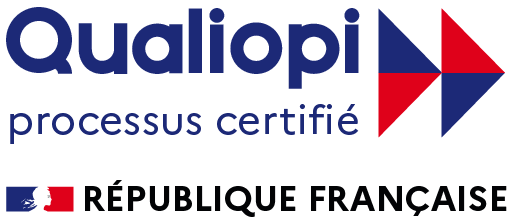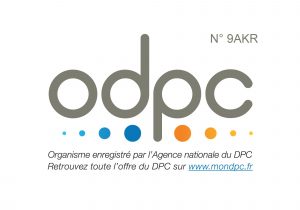Preliminary observations on the ventilatory management of ICU COVID-19 Patients experience from Lombardy, Italy March 2020
Redacted from notes from Prof. L. Gattinoni, Milan – Italy
Preliminary general observations have been made from the current experience in the management of Covid-19 in Lombardy, Italy, during the violent outbreak of the pandemic in this region. This led to the saturation of ICU beds available, and dramatic pressure on the healthcare systems and providers. Intensivists and anesthesiologists are in the front line.
The following statements derive from professional discussions between Prof. L. Gattinoni from Milan and intensive care physicians involved in treated Covid-19 patients, and they have been redacted for unrestricted internal use. Those observations have not been published or revised.
They may be useful for colleagues approaching Covid-19 patients in ICU.
Prof. L. Gattinoni is a leading contributor in intensive care science, authoring major publications on prone positioning, fluid management, protective ventilation, and ECMO support. The NEJM hosted several of his works.
Critical thinking should be applied when treating Covid-19 patients, and the following recommendations should be taken as general advice and expert opinion.
In Covid-19 ICU patients the pulmonary pattern is NOT similar to ARDS, as hypoxia is prevalent and pulmonary compliance is generally high. In general, two categories of patients may be identified:
a. High-pulmonary compliance patients with isolated viral pneumonia. The main finding is hypoxic vasoconstriction, explaining the observed severe hypoxemia. In those patients, the major issue is related to perfusion, as lungs are inflated and increasing PEEP does not help. High PEEP and prone positioning do not lead to recruitment of collapsed areas, but they only adjust pulmonary perfusion. Lung CT scans in those patients confirm that there are not significant areas to recruit, and a 50% shunt is present. Moreover, PEEP levels at 15 cmH20 and beyond may compromise right cardiac filling and an increase of the need for fluid intake and/or norepinephrine. A PaO2 level around 60 mmHg (8 kPa), and patients should be mildly sedated, or paralyzed.
b. Patients who have been treated with CPAP helmet [in Italy the use of helmet facemask is more prevalent than facemask, but findings may apply for both] show high inspiratory efforts and highly negative intrathoracic pressure. In addition to viral pneumonia, those patients likely have also self-inflicted ventilator induced lung-injury with subsequent decrease in compliance (values lower than 50 ml/cmH2O) and edema in the lower lobes, as seen in CT scans. Those patients present a pattern similar to ARDS and they benefit of PEEP and prone positioning, paying attention in variations of ScVO2 and PaCO2
From an operational point of view, those recommendations may apply:
- OXYGEN ALONE VS. VENTILATION.Hypoxemia should be treated at first instance with high FiO2, without rushing to reach significant targets in the short run: any interventions may be more harmful than buying time.
- MANAGEMENT OF PEEP .PEEP levels should be limited at 8-10 cmH2O, since higher levels will not increase the pulmonary compliance and they will impact on venous return with higher harm than the marginal benefit in improved oxygenation. Likely, Covid-19 patients with low compliance have a recent history of non-invasive ventilation. For this reason, they may present ventilation-induced lung injury and bacterial superinfection. In those case, further cautious gradual increases of PEEP may be of benefit if associated to monitoring of ScO2. When SvO2 starts decreasing, that is a sign of impaired cardiac output and PEEP levels are not any more useful for lung recruitment. Echo may be useful to assess the right heart function while managing increases of PEEP.
- PRONE POSITIONING.Prone positioning should be considered as a rescue maneuver to facilitate the redistribution of pulmonary blood flow, rather than for opening collapsed areas. Be aware that long-term prone positioning/supine cycles is of very little benefit in patients with high compliance, and it leads to high levels of stress and fatigue in the personnel.
- NITRIC OXIDE.Use of NO should be considered in order to maintain lung perfusion
- MICROTHROMBOSIS AND D-DIMER.Microthrombosis and associated ischemic events are very common (also strokes). D-dimer levels should be monitored frequently.
- PERFORMING CT SCANS.
- Whenpossible-giventhelogisticsissuesandthehighriskofcontamination-CTscansshouldbe performed with the aim to identify the recruitable lung parenchyma. The recruitable fraction should be assessed with two consecutive CT scans in the same session, respectively at PEEP levels of 5 and 45 cmH2O in order to measure the difference in the amount of ventilated parenchyma and the potential for recruitment.
- LIBERAL TIDAL VOLUME.In patients with high compliance, tidal volumes higher than 6 ml/Kg should be considered. Elevated compliance supports this liberal strategy: PaO2 levels higher than 50 mmHg suggest hypoventilation and readsorption atelectasis.
Commonly, patients in spontaneous or semi-assisted breathing (CPAP/NIV) for a long time have highly negative intrathoracic pressure, and high pulmonary compliance.
9. SHUNT DETERMINATION.
Measuring the shunt fraction is the best strategy to assess oxygenation.
The relationship etCO2/PaCO2 is a useful tool to quantify pulmonary exchanges at bedside. A ratio <1 suggests elevated shunt and dead space (area of lung ventilated and not perfused).
10. SUMMARY.
- PEEP levels should be kept low
- Tidal volume thresholds should not be limited at 6 ml/Kg
- Respiratory rate should not exceed 20 breaths/minute
- Patientsshouldbeleft“quiet”:avoidingdoingtoomuchisofhigherbenefitthandoingat any costs
Again, those recommendations derive from professional conversations with leading experts during the outbreak of Covid-19 in Italy. They are not guidelines and they are not based on reviewed scientific evidence. Individual clinical judgement is advised.
Ventilation Non Invasive
Prevention_of_postoperative_pulmonary
Noninvasive_respiratory_support_in_the_hypoxaemic.


